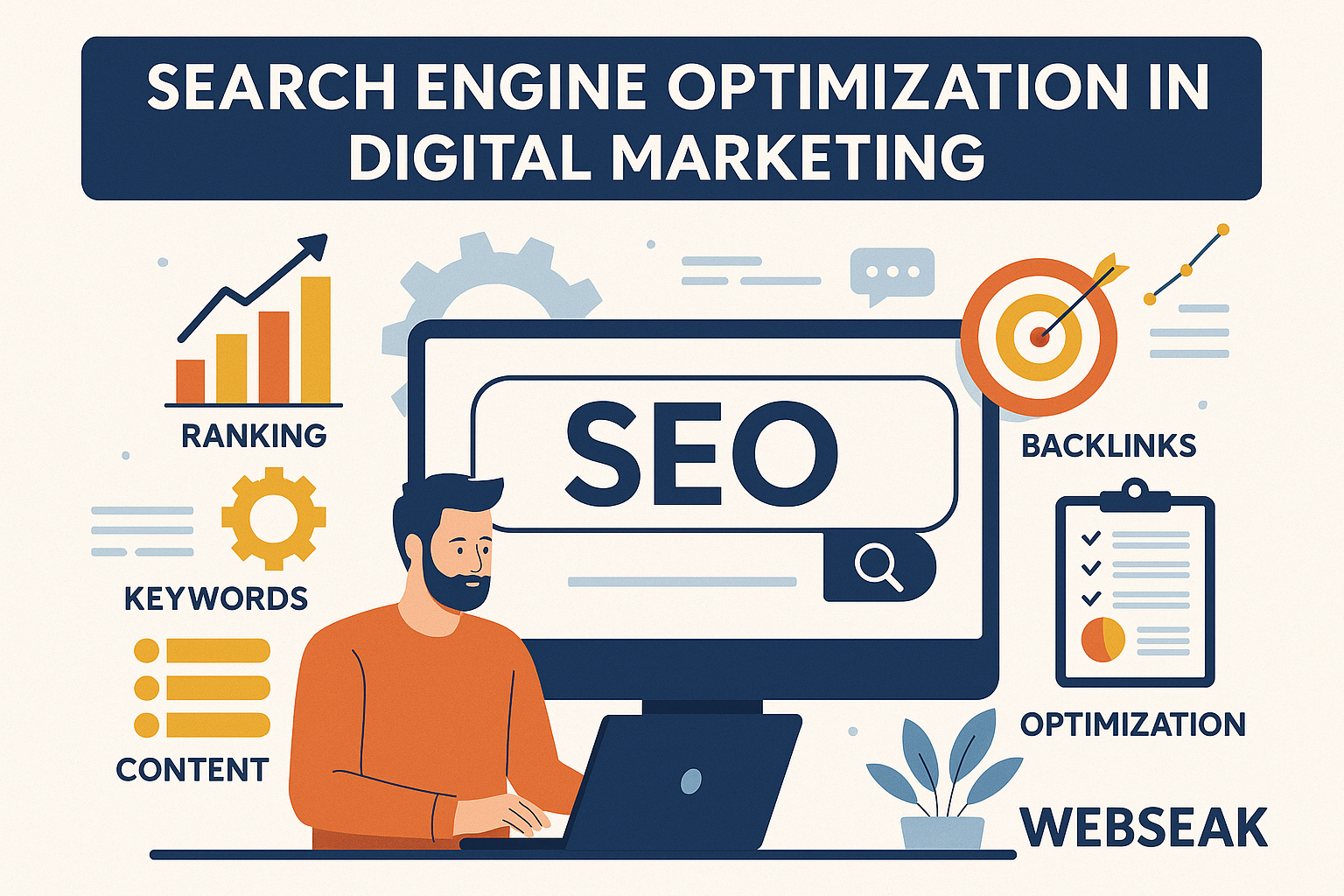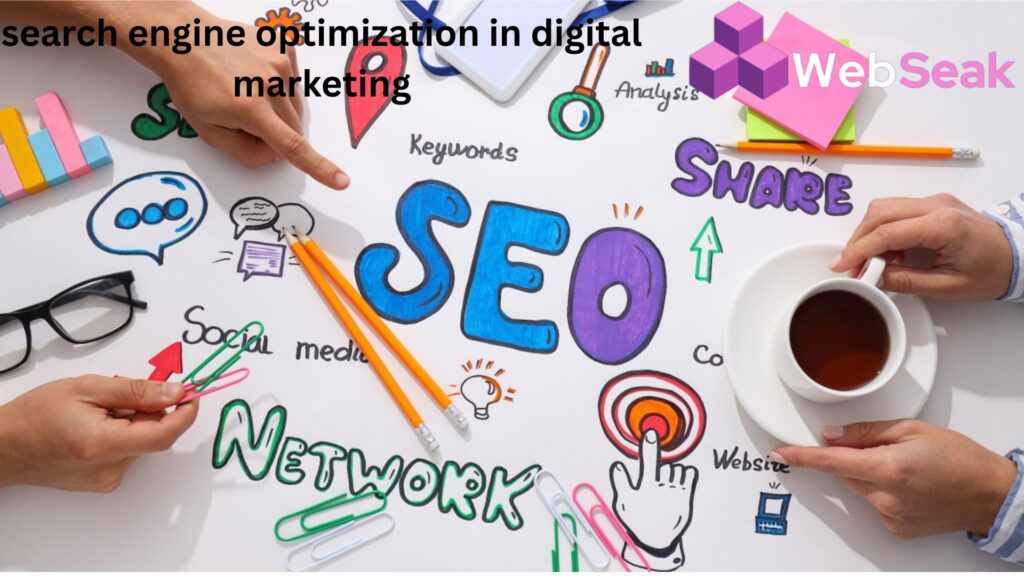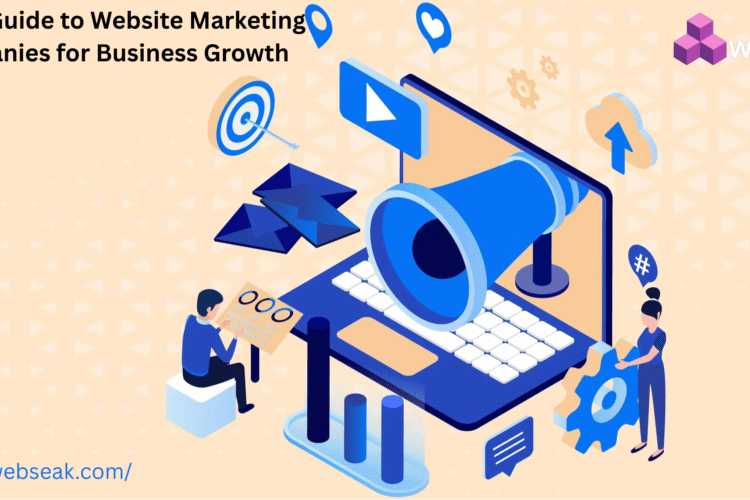
Introduction: Why SEO is the Foundation of Digital Marketing
In today’s competitive digital landscape, simply having a website isn’t enough. If your target audience can’t find your business online, your offerings may as well not exist. This is where Search Engine Optimization (SEO) comes into play. As a core component of digital marketing, SEO ensures your brand is visible to the right people at the right time on platforms like Google, Bing, and Yahoo.
Whether you’re a small business owner, a blogger, or a large enterprise, optimizing your digital presence is essential for long-term growth.
Table of Contents
What is Search Engine Optimization (SEO)?
SEO is the process of improving your website’s visibility in organic (non-paid) search engine results. It involves making specific changes to your site design and content so that search engines can better understand and rank your site.
When done correctly, Search Engine Optimization in Digital Marketing helps your website appear at the top of search results for keywords related to your business.
The Role of SEO in Digital Marketing

SEO is more than just inserting keywords into a blog post. It encompasses a broad set of strategies aimed at increasing visibility, generating quality traffic, and boosting conversions. In fact, Search Engine Optimization (SEO) is the backbone of all successful digital marketing campaigns for the following reasons:
- It supports content marketing by improving reach
- It enhances user experience (UX)
- It contributes to brand authority and trust
- It provides long-term, compounding results
- It lowers the cost of acquiring leads compared to paid ads
Key Components of Search Engine Optimization (SEO)
A robust Search Engine Optimization (SEO) strategy covers three major areas:
1. On-Page SEO
This involves optimizing elements on your website. Examples include:
- Keyword Optimization: Using relevant keywords in titles, meta descriptions, headers, and content.
- Content Quality: Creating useful, original, and informative content.
- Internal Linking: Connecting relevant pages within your site.
- Page Speed & Mobile-Friendliness: Ensuring fast load times and responsiveness on mobile.
2. Off-Page SEO
This includes strategies executed outside your website to build authority:
- Backlinks: Getting other websites to link to your content.
- Social Sharing: Promoting content on social media platforms.
- Brand Mentions: Unlinked mentions of your brand on forums or blogs.
3. Technical SEO
This ensures your site is accessible and crawlable by search engines:
- XML Sitemaps
- Robots.txt files
- Structured Data (Schema Markup)
- SSL Certificates (HTTPS)
- Canonical Tags
SEO vs. SEM: What’s the Difference?
Many confuse SEO with SEM (Search Engine Marketing). Here’s a quick breakdown:
| Factor | SEO | SEM |
|---|---|---|
| Cost | Free (organic) | Paid (PPC) |
| Time | Long-term | Immediate |
| Traffic | Sustainable | Temporary |
| Results | Gradual growth | Instant exposure |
Best Practice: A successful digital marketing strategy often includes both SEO and SEM.
Benefits of SEO in Digital Marketing
1. Increased Website Traffic
SEO helps your site rank higher in SERPs (Search Engine Result Pages), increasing organic traffic without relying on ads.
2. Better ROI Than Paid Advertising
While PPC delivers faster results, SEO yields a higher ROI over time with consistent effort.
3. Builds Trust and Credibility
People trust organic search results more than paid ads. Ranking on page one gives your brand instant credibility.
4. Improves User Experience
Google rewards websites that are easy to navigate, mobile-optimized, and fast-loading—all elements of great UX.
5. Long-Lasting Results
Unlike paid campaigns that stop when your budget ends, SEO efforts continue to generate results for months or even years.
Steps to Implement an Effective SEO Strategy
Here’s how to get started:
Step 1: Conduct Keyword Research
Use tools like Google Keyword Planner, SEMrush, or Ahrefs to identify what your audience is searching for.
Step 2: Optimize Your Website Structure
Ensure your website is logically organized with a clear hierarchy and internal linking.
Step 3: Create High-Quality Content
Focus on solving problems, answering questions, and providing value. Use relevant keywords naturally.
Step 4: Work on Technical SEO
Compress images, add meta tags, enable HTTPS, and create a responsive design.
Step 5: Build Backlinks
Earn high-quality backlinks from relevant websites through guest posts, content marketing, and outreach.
Step 6: Track and Analyze Results
Use Google Analytics, Search Console, and other tools to monitor your keyword rankings and site performance.
Top SEO Tools to Use in 2025
- Google Search Console
- Ahrefs
- SEMrush
- Yoast SEO (for WordPress users)
- Moz Pro
- Ubersuggest
Common SEO Mistakes to Avoid
- Keyword stuffing
- Ignoring mobile optimization
- Duplicate content
- Not updating old content
- Buying low-quality backlinks
- Neglecting meta descriptions and alt texts
Future of SEO in Digital Marketing
As technology evolves, so does SEO. Future trends include:
- Voice Search Optimization
- AI and Machine Learning Integration
- Visual Search
- E-A-T (Expertise, Authoritativeness, Trustworthiness) content
- Core Web Vitals Focus
Why Choose Webseak for SEO Services?
At Webseak, we understand the nuances of modern SEO. Our team uses data-driven strategies and up-to-date practices to boost your visibility and traffic. Whether you’re a local business or an e-commerce giant, we tailor our services to your needs.
What we offer:
- In-depth SEO audits
- Local and national SEO
- Content strategy & execution
- Link-building services
- Transparent monthly reporting
Conclusion
SEO is not a one-time effort—it’s a long-term investment in your brand’s future. As part of a comprehensive digital marketing strategy, Search Engine Optimization drives traffic, builds authority, and sets the stage for lasting success.
If you’re looking to grow your digital footprint and dominate search rankings, partner with a results-driven agency like Webseak.





